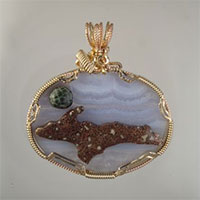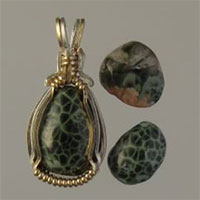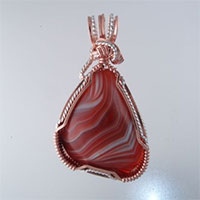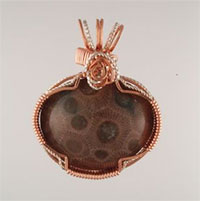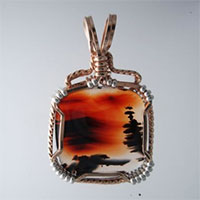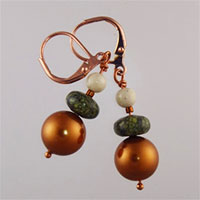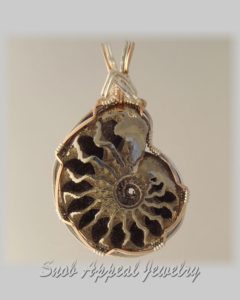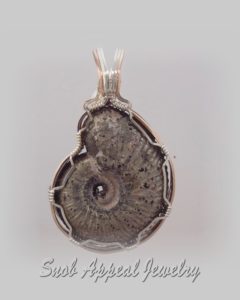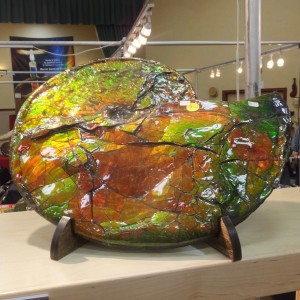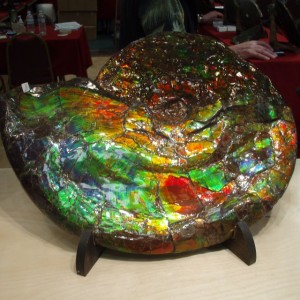
Iridescent Ammonite from Alberta are many Thousand Dollars.
There are many sources on line (and we should always believe anything on the Internet), that indicate the first Discus’ were Ammonites. Other sources (WIKI) say the first Discus’ were cats. Who do you believe? I am indeed confused; perhaps they alternated; throw a cat then an ammonite. I say nothing more for fear lest PETA members boycott my blog.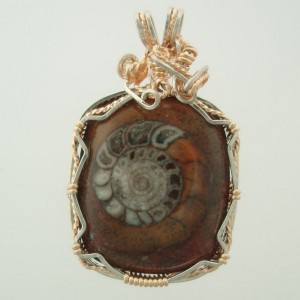
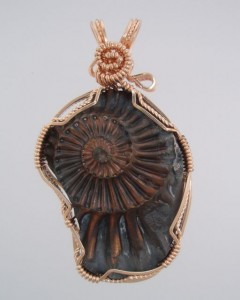
Reverse impression and golden hue make this Ammonite classy.
I enjoy making fossil jewelry. A favorite popular fossil is Discus Ammonite. Most ammonites are found in Canada, U.S., or Madagascar. I’ve also seen plates of Morroccan Ammonites that are obviously fakes (ie artsy positioning, exact duplicates, or Ammonites from different time periods in the same plate.
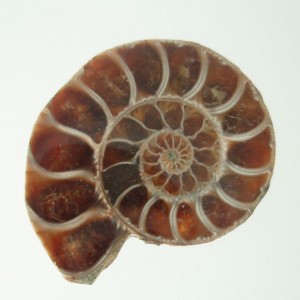
Moroccan Ammonite
Ammonites were Cephalopods related to Nautilus, Squid, Cuttlefish, and Octopi. Many people think of them as snails. This is incorrect. Sizes range from huge 3 footers to miniscule sizes. I like the 3/4 to 2″ size for jewelry. The avid specimen collectors love the amazing iridescent Ammonites from Alberta. These specimens are priced in the high 5 figures. Some Ammonites from Europe are six feet in diameter. Ammonites thrived in the Jurassic and Cretaceous Periods (175 to 65 Million years ago).
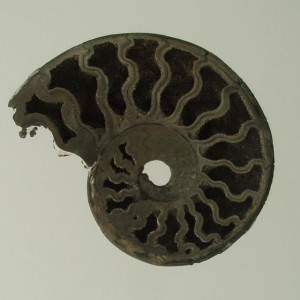
Kosmo Ceras
I have been attracted by the Pyrite Ammonites, Kosmo Ceras, from the Volga River in Russia. A Russian dealer mentioned that you have to pay large sums for a ride on a government helicopter to this remote site on government property. You could save much money by buying a Snob Appeal Jewelry Ammonite instead of exploring the Volga River Valley.
I love the reverse imprinted Ammonites that appear to be sprayed with gold paint from New York State. A light dusting of Pyrite occurs naturally on these Ammonites. I think, along with the iridescent Ammonites of Alberta, these particular Ammonites are very classy. I seek good ones out each year at Tucson.
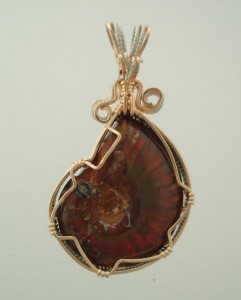
Iridescent Ammonite
The iridescent part of the Ammonite is called Ammolite, and is considered gem material.
My metaphysical friends tell me that these iridescent Ammonites have good Feng Shui in the home or office. I would think that if you owned an Ammonite Pendant from Snob Appeal Jewelry, it should provide enough Feng Shui for your body. Besides Feng Shui, our Ammonite Pendants are great conversation pieces and look great with anything.
Fun Ammonite trivia:
Ammonites were believed to be petrified snakes in Medieval times.
Navajo and plains Indians called Ammonites “Buffalo Stones” as they had a resemblance to Bison. They carried them in their medicine bags for health and good hunting.


